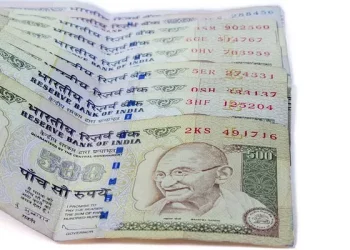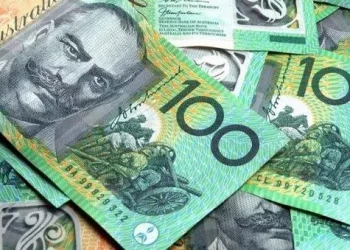The Chinese yuan (CNY), officially known as the Renminbi (RMB), is the official currency of the People’s Republic of China. It plays a crucial role in both China’s domestic economy and its growing influence on the global financial system. With the world’s second-largest economy by GDP, China’s currency is watched closely by investors, policymakers, and businesses. Understanding what the Chinese yuan is backed by is essential to gaining a deeper insight into the Chinese financial system, how it operates, and its stability as a global currency.
In this article, we will explore the various factors that “back” the yuan, including the Chinese economy, the monetary policies of the People’s Bank of China (PBOC), foreign exchange reserves, China’s growing role in international trade, and the political and institutional framework supporting the currency.
The Concept of Currency Backing
To understand what CNY is backed by, it is important to define what “backing” means in the context of currency. Historically, many currencies were backed by physical commodities, such as gold. This was known as the “gold standard,” where a country’s currency had a direct relationship with the amount of gold it held. For instance, the U.S. dollar was once backed by gold, meaning that the government was obliged to exchange dollars for gold upon request.
However, most modern currencies, including the Chinese yuan, are no longer backed by physical commodities. Today, most currencies operate on what is called a “fiat” basis. Fiat currencies are not directly linked to a physical asset like gold or silver. Instead, their value is derived from the trust and confidence that people and markets have in the economy and the institutions that issue them.
So, when we ask what CNY is backed by, we are essentially asking: What gives the Chinese yuan its value? What factors ensure its stability and strength as a currency? Let’s dive deeper into these aspects.
The Strength of the Chinese Economy
At the core of the value of any currency lies the strength of the economy that issues it. The Chinese yuan’s value is heavily backed by the underlying economic power of China.
Industrial Base and Economic Growth
China is the world’s second-largest economy, having experienced rapid economic growth for several decades. From being a primarily agrarian society, China transformed into an industrial powerhouse and became a major player in global trade. The country’s industrial base is vast, producing goods ranging from electronics to textiles, machinery, and automobiles.
This massive industrial output fuels demand for the yuan both domestically and internationally, as global firms that trade with Chinese companies need to transact in Chinese currency.
Trade Surplus
China often runs a trade surplus, meaning it exports more than it imports. The country is a major exporter of goods to the United States, the European Union, and many developing countries. This surplus generates significant inflows of foreign currency, particularly U.S. dollars, into China. In turn, this strengthens the yuan because it increases demand for the Chinese currency, as international buyers need to convert their currencies into CNY to pay for Chinese goods.
The trade surplus supports China’s economic fundamentals, contributing to the strength and stability of the yuan.
GDP Growth
Despite a slowdown in recent years, China still enjoys relatively high GDP growth rates compared to many other major economies. Continuous growth in GDP means that China’s economic base is expanding, leading to more jobs, higher consumer spending, and greater overall demand for its currency. A strong and growing economy instills confidence in the currency, increasing its value in global markets.
Government Policy and the Role of the People’s Bank of China (PBOC)
The People’s Bank of China, which acts as the country’s central bank, plays a pivotal role in managing the value of the yuan through its monetary policy decisions.
Exchange Rate Policy
Unlike fully floating currencies, such as the U.S. dollar or the euro, the Chinese yuan operates under a managed float system. The PBOC tightly controls the exchange rate of the yuan, allowing it to fluctuate within a specified range. This means that while market forces do play a role in determining the yuan’s value, the central bank actively intervenes to prevent extreme volatility.
Each day, the PBOC sets a reference rate (the “fix”) against a basket of other currencies, particularly the U.S. dollar. The yuan is allowed to trade within a certain band around this rate. If market forces push the currency beyond this band, the central bank intervenes by buying or selling yuan to bring it back into the desired range.
By maintaining this managed float system, the Chinese government ensures that the yuan’s value remains relatively stable, reducing the risks of inflation or sharp depreciation, which could undermine confidence in the currency.
Interest Rate Management
The PBOC also uses interest rates as a tool to control inflation and stimulate or cool down economic growth. By adjusting interest rates, the central bank can influence borrowing, investment, and consumption within China, indirectly affecting the value of the yuan.
For instance, higher interest rates attract foreign capital, as investors seek higher returns on their investments. This inflow of capital strengthens the yuan, as foreign investors need to convert their currency into CNY to invest in Chinese assets.
Capital Controls
China maintains strict capital controls to regulate the flow of money in and out of the country. These controls limit the amount of Chinese yuan that can be exchanged for foreign currencies and restrict the ability of foreign investors to repatriate profits without approval from Chinese regulators. This system helps the PBOC maintain stability in the currency market and prevents excessive fluctuations in the yuan’s value.
While these capital controls limit the yuan’s convertibility on international markets, they serve as a mechanism to protect the currency from external shocks and speculative attacks, thus maintaining its stability.
Foreign Exchange Reserves
One of the key factors backing the Chinese yuan is the large foreign exchange reserves held by China. These reserves, which include U.S. dollars, euros, Japanese yen, and gold, act as a buffer against economic shocks and currency fluctuations.
Role of U.S. Dollar Reserves
China holds over $3 trillion in foreign exchange reserves, the largest in the world. A significant portion of these reserves is held in U.S. dollars, in the form of U.S. Treasury bonds and other assets. This large stockpile of foreign currency allows China to intervene in the forex markets if necessary, by selling foreign reserves to buy yuan, thereby supporting the value of its currency.
Holding such a large amount of reserves strengthens global confidence in China’s ability to defend the yuan in times of crisis. In effect, the size of these reserves backs the yuan by signaling that China has the resources to maintain the stability of its currency.
Gold Reserves
In addition to foreign currencies, China holds substantial gold reserves. Gold is often viewed as a safe-haven asset, and many countries hold gold to diversify their reserves and hedge against the volatility of fiat currencies. While the yuan is not backed by gold in a traditional sense, the presence of gold reserves adds to the overall financial strength supporting the currency.
Internationalization of the Yuan
In recent years, China has made significant efforts to internationalize its currency and reduce its dependence on the U.S. dollar in global trade. The more a currency is used in international transactions, the greater the demand for it, which helps support its value. The Chinese government has initiated several policies aimed at increasing the yuan’s use in global trade and finance.
Currency Swap Agreements
China has entered into currency swap agreements with multiple countries, including Russia, Brazil, and Argentina. These agreements allow these nations to trade in yuan rather than relying on the U.S. dollar. This not only increases the demand for the yuan but also solidifies China’s position in the global financial landscape. By facilitating trade in yuan, China is not only promoting its currency but also enhancing its economic ties with other nations.
Belt and Road Initiative (BRI)
The Belt and Road Initiative (BRI), launched by China in 2013, aims to enhance global trade and stimulate economic growth across Asia and beyond by developing trade routes reminiscent of the ancient Silk Road. The initiative has led to significant investments in infrastructure projects in numerous countries. By encouraging the use of the yuan in these transactions, China strengthens the global reach of its currency.
The BRI is a strategic move that not only promotes infrastructure development but also positions the yuan as a viable currency for international trade. As more countries engage in trade with China and utilize the yuan, its status as a global currency continues to rise.
Inclusion in Global Financial Systems
The yuan’s inclusion in various global financial systems is another critical factor in its internationalization. In 2016, the International Monetary Fund (IMF) added the yuan to its basket of currencies that make up the Special Drawing Rights (SDR). This inclusion recognized the yuan as an important global currency and further legitimized its use in international transactions.
With this recognition, the yuan is increasingly seen as a viable alternative to the U.S. dollar, particularly in trade and investment. This growing acceptance reinforces the yuan’s stability and value as a currency.
Political Stability and Institutional Framework
The value of any currency is also supported by the political environment in which it exists. A stable political landscape contributes to economic confidence, which is essential for currency stability.
Governance and Policy Framework
The Chinese government has a centralized political system, allowing for swift decision-making and implementation of policies. This centralized governance can lead to more effective economic management, especially in times of crisis. The ability to implement policies quickly means that the government can respond to economic challenges efficiently, thus maintaining confidence in the yuan.
The PBOC’s role in this governance structure is crucial. As the central bank, it regulates monetary policy, maintains financial stability, and oversees the banking system. Its credibility and effectiveness are vital for maintaining the trust of both domestic and international investors in the yuan.
See Also: Is the Chinese Yuan Pegged to the U.S. Dollar?
Social Stability
Social stability is another important factor that underpins the value of the yuan. China has experienced remarkable economic growth, leading to improved living standards and significant poverty reduction. However, the government also faces challenges, including regional disparities and potential social unrest.
The Chinese government invests heavily in maintaining social stability through various measures, including economic stimulus, public welfare programs, and job creation. A stable social environment contributes to consumer confidence and economic growth, which, in turn, supports the value of the yuan.
Challenges Facing the Yuan
While there are many factors that support the value of the yuan, there are also challenges that could impact its strength in the future.
Trade Tensions
Ongoing trade tensions between China and other major economies, particularly the United States, could pose risks to the yuan’s value. Tariffs, trade barriers, and geopolitical conflicts can lead to reduced demand for Chinese goods, impacting the country’s trade surplus and, consequently, the yuan’s value. A slowdown in export growth could weaken the currency, making it more vulnerable to speculative attacks.
Economic Slowdown
China’s economy has shown signs of slowing growth in recent years, raising concerns about its long-term sustainability. Factors such as rising debt levels, demographic changes, and structural economic challenges may impact growth rates. If the economy continues to slow, it could undermine confidence in the yuan and lead to depreciation.
Transition to a Consumer-Driven Economy
China is transitioning from an export-driven economy to one that relies more on domestic consumption. While this shift is necessary for sustainable growth, it also presents challenges. If consumer spending does not increase as anticipated, the economy may struggle to maintain its growth momentum. This could impact the yuan’s stability and value.
Capital Outflows
China’s capital controls have been effective in managing outflows of money from the country. However, if investors lose confidence in the Chinese economy or government policies, there could be significant capital flight. This outflow would increase supply in the currency markets, leading to depreciation of the yuan.
Conclusion
The Chinese yuan (CNY) is backed by a combination of factors that contribute to its value and stability. These include the strength of the Chinese economy, the effective monetary policies of the People’s Bank of China, substantial foreign exchange reserves, and the growing internationalization of the currency. Additionally, a stable political environment and effective governance further reinforce the yuan’s value.
However, challenges such as trade tensions, economic slowdown, and potential capital outflows pose risks to the currency’s stability. Understanding what the yuan is backed by provides valuable insights into the dynamics of the foreign exchange market and the overall health of the Chinese economy.
As China continues to assert its influence on the global stage, the yuan’s role in international trade and finance will likely evolve. Investors, policymakers, and businesses must remain vigilant in monitoring these developments, as they will shape the future of the yuan and its standing in the global currency hierarchy.
Related Topics:




























